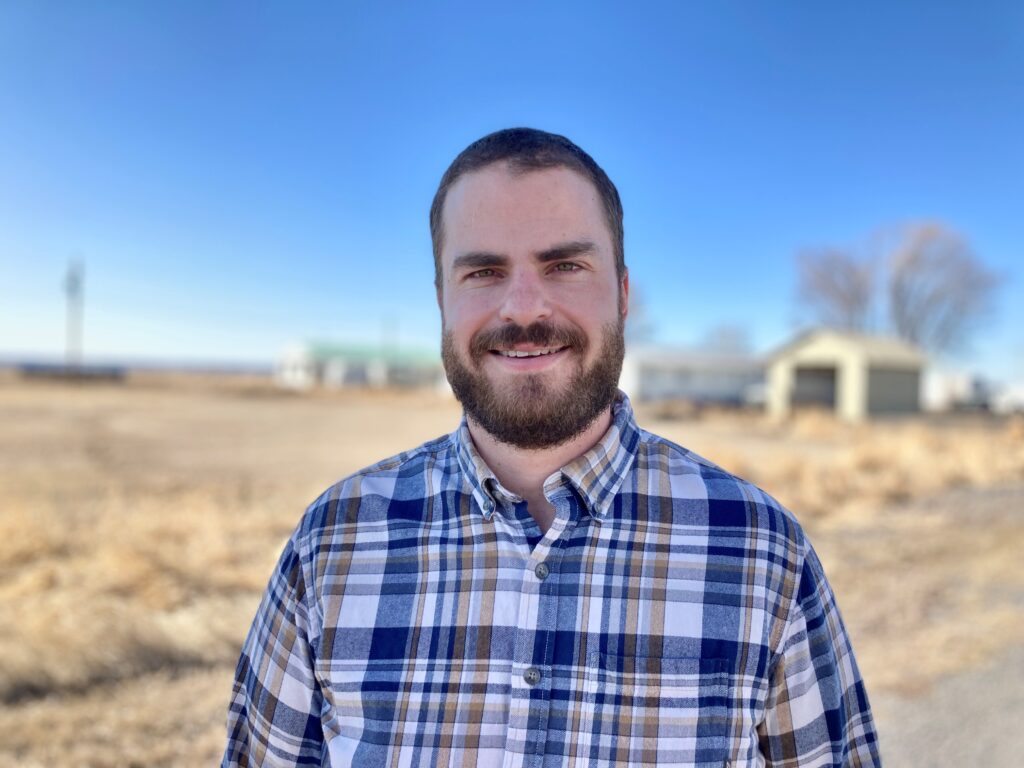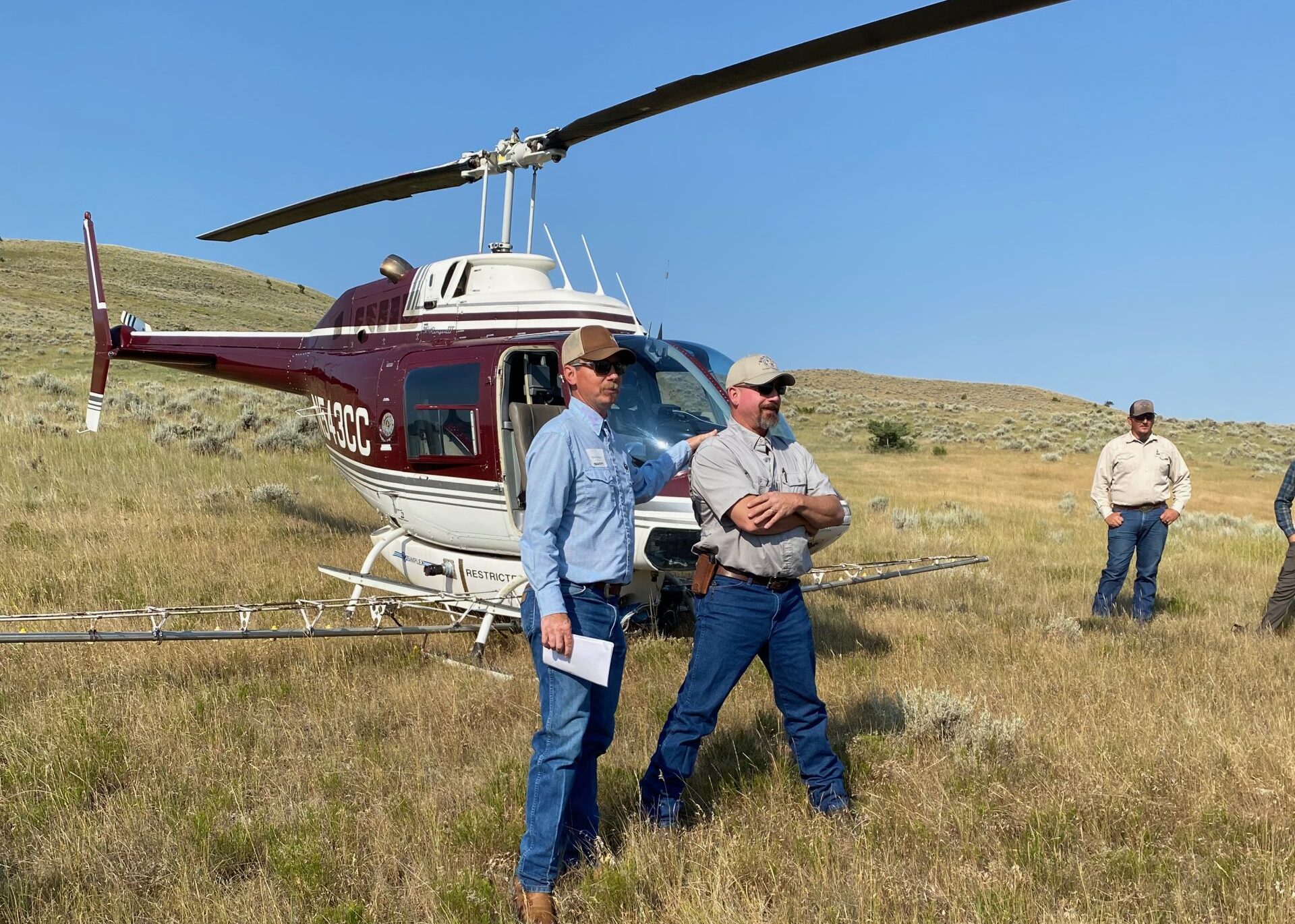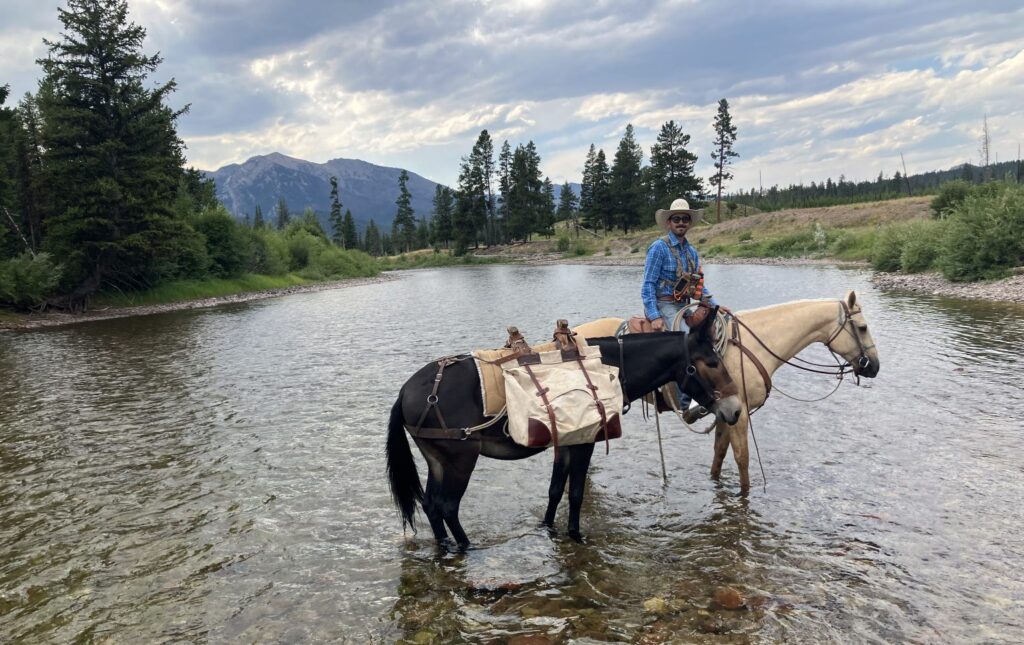Andrew Olsen
Field Notes is a compilation of first-person essays composed across many years by IWJV partners, board members, and staff. Our professional work in collaborative conservation is inspired by our personal experiences, relationships, and conversations in the field. That “field” can look very different depending on the work at hand: Sometimes it is one of grass hay at sunrise or deep within the sagebrush sea. Other times it’s in a conference room at an agency’s headquarters, or in a public hearing in the halls of Congress. In this series, we hope to share a few stories from these wildly different fields with you.
In this Field Notes entry, IWJV Science to Implementation Coordinator Andrew Olsen works with the University of Wyoming’s IMAGINE to combat hopelessness in the face of invasive annual grass proliferation.
As I stood on a windy ridgetop in Sheridan County, Wyoming, the most notable feature of the landscape was a stark difference from one side of the fence line to the other. On one side of the fence, the vegetation had succumbed mainly to the summer heat and was brown and crispy. Invasive annual grasses carpeted the earth, thick below larger native perennial grasses and forbs. Conversely, the vegetation on the other side of the fence was emerald green, lush, and dominated by Wyoming’s native range plants. The difference between the pastures was an application of Rejuvra, a promising new herbicide for invasive annual grasses, on the verdant side.

The event was sponsored by the University of Wyoming Institute for Managing Invasive Grasses Invading Native Ecosystems (IMAGINE) Tech Transfer Partnership. I am privileged to serve on the Core Team for this partnership, which seeks to put science into practice, helping land managers address the greatest threat to the sagebrush biome: invasive annual grasses. The partnership produces numerous resources and hosts workshops for those who wish to strategically defend core sagebrush habitats from invasive annual grasses such as cheatgrass, medusahead, and ventenata. These invaders account for about 70% of the loss and degradation of over 1 million acres of sagebrush habitats annually. To effectively conserve and manage the sagebrush biome for the benefit of wildlife and people, we must improve our strategies and tactics for managing annual grasses.
Given the rapid expansion and dramatic effects of invasive annual grasses across the western United States, it’s easy to feel hopeless. Just a few weeks after this event, lightning sparked some of the largest rangeland fires in Wyoming history. Managing invasive annual grasses to reduce the size and frequency of wildfires and improve post-fire recovery is more important than ever in Sheridan County, Wyoming, and across the West. Thanks to the experts from universities, federal agencies, and NGOs involved in the Tech Transfer Partnership, we’re giving people the tools and strategies to successfully manage invasive annual grasses and instilling a bit of hope in the partnerships that work in landscapes invaded or at risk of invasion by these aggressive plants. In addition to technical support on herbicides, the partnership provides resources, guidance, and training on various other tools and tactics, presents the spatial strategies for prioritizing treatments, and explains the role of inventory and monitoring in a successful invasive annual grass management program. The workshop in Sheridan County even included a demo of a helicopter application of herbicide along with tips and tricks for working with aerial herbicide applicators from one of the best pilots in the West.
I was energized to see engaged and passionate local land managers and scientific experts working together and learning from each other about how to address one of the most pressing conservation challenges in the United States. With the help of the Tech Transfer Partnership, I look forward to a future where both sides of the fence are green, and invasive annual grasses increasingly take a back seat in our care for vital native rangelands.


Andrew Olsen is the IWJV’s Science to Implementation Coordinator. Andrew helps bridge the gap between the science production and conservation delivery communities. Working closely with both of these communities, he helps translate cutting-edge conservation science into on-the-ground conservation outcomes in the imperiled habitats of the Intermountain West. Outside of work, Andrew enjoys spending time with his family, fishing, hunting, and cooking.



